Key Takeaways
- Choosing the perfect paint involves understanding the different types of paints available and their ideal use cases. Consider factors like durability, finish, and drying time when making your selection.
- Professional painting techniques can significantly enhance the quality and longevity of your paint job. Learn about these techniques and apply them to get a superior finish.
- Creative decorating ideas can transform any space, making it more beautiful and appealing. Use these ideas to personalize your space and make it truly unique.
- The right color and style can drastically change the overall feel and ambiance of a room. Experiment with various combinations to find what works best for your space.
- Intelligent painting and decorating can add substantial value to your home. Enhance your home's worth by making strategic improvements that provide a high return on investment.
- Expert tips can guide you towards achieving a professional-grade finish. Leverage these tips to ensure your painting and decorating project stand out.
- Whether you choose DIY painting or hire a professional depends on several factors. Weigh the pros and cons of each option to decide what's best for you.
- Maintenance is crucial for preserving the look and feel of your paint job. Follow the recommended maintenance tips to extend the life of your paintwork.
- Environmentally-friendly painting and decorating options are available for those conscious about their impact on the planet.
- Painting and decorating business spaces come with their unique considerations. Understand these to create an inviting and productive business environment.
- Even small spaces can be transformed with smart painting and decorating techniques. Make your small spaces appear bigger and more welcoming with these tips.
- Stay ahead of the curve by being aware of upcoming trends in painting and decorating. Incorporate these trends to keep your space looking fresh and modern.
Introduction
Imagine walking into a room that instantly sparks joy and tranquility, a space that reflects your personality, and subtly tells a story about who you are. This is the magic of expert painting and decorating – it can transform a bare wall into a canvas of expression, and an ordinary room into a sanctuary that resonates with warmth and beauty.
Recent studies show that a well-painted and decorated home cannot just uplift your mood but also add substantial value to your property. According to HomeGain's 2012 survey, a simple fresh coat of paint on the interiors can offer a 107% return on investment, while painting the exteriors promises a return of 55%.
In this comprehensive guide, we unpack the secrets of choosing the perfect paint, mastering professional painting techniques, and exploring creative decorating ideas. Whether you're a homeowner looking to revamp your space or a business owner aiming to add a unique touch to your workspace, this article has something for everyone.
Read on to empower your business and home with painting and decorating tips that are sure to make a lasting impression. Let's paint a vibrant picture of possibilities together!
Choosing the Perfect Paint: Types and Colors
Choosing the right type of paint can dramatically enhance the aesthetic appeal and durability of your work. Paints come in a variety of types, each with its unique characteristics and best use cases. Here's a quick rundown:
- Primer: This is used to prepare the walls before applying the paint. It ensures a smooth and even finish, and it can cover up old colors and stains. Primer costs between $10-$60 per gallon, depending on the brand and quality.
- Latex Paint: Also known as water-based paint, it's the most common type of paint for interior walls due to its quick-drying nature and easy clean-up. It costs around $15-$50 per gallon.
- Oil-Based Paint: This type offers a glossy, smooth finish and is more durable than latex paint. However, it takes longer to dry and has a stronger odor. It's ideal for high-traffic areas and trim. Prices range from $20-$60 per gallon.
- Enamel Paint: Known for its hard and glossy finish, enamel paint is perfect for areas that require easy-to-clean surfaces, like kitchens and bathrooms. It costs approximately $30-$60 per gallon.
Choosing the right color is equally crucial as it sets the mood and tone of the room. Here are some tips:
- Light Colors: They make a room appear larger and more open. They're perfect for small rooms to give an illusion of space.
- Dark Colors: They create a cozy and intimate ambiance. Ideal for large rooms or those with high ceilings.
- Warm Colors: Shades of red, orange, and yellow can make a room feel welcoming and energetic.
- Cool Colors: Blue, green, and purple hues can evoke a sense of calm and relaxation.
Remember, the color you choose can influence the perceived temperature of the room. According to a study by the Pantone Color Institute, warm colors can increase the perceived temperature by up to 3°-7°F, while cool colors can make a room feel 6°-14°F cooler.
Ultimately, the perfect paint type and color depend on your personal preferences, room size, and the mood you want to create.
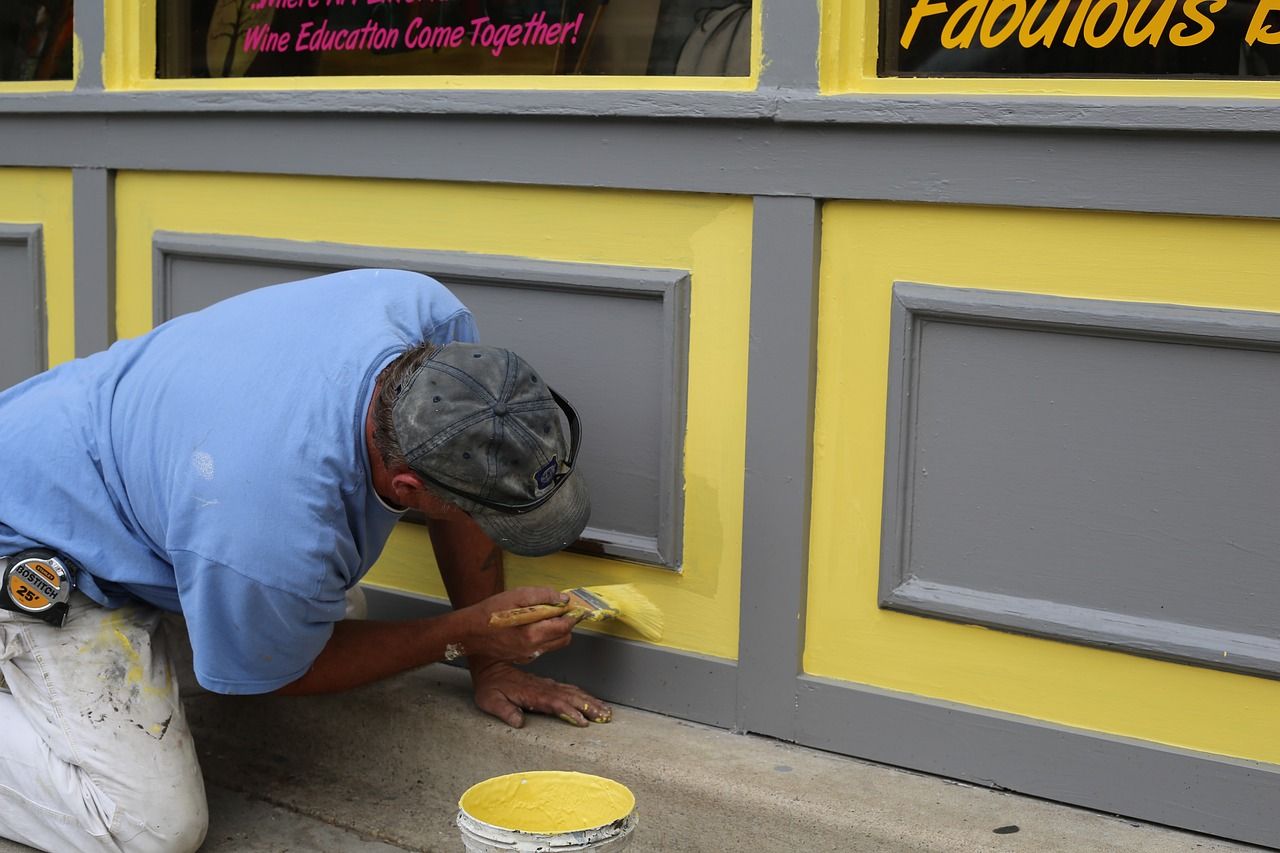
Budget Management: Effective Strategies for Painting and Decorating Projects
Managing your budget effectively is crucial when embarking on painting and decorating projects. Whether you’re refreshing a single room or overhauling your entire property, understanding how to allocate your funds can make a significant difference in the quality and completion of your project. Here are some key considerations and tips to help you manage your budget without compromising on quality.
Understanding Costs
The cost of painting and decorating can vary widely based on several factors including the size of your space, the quality of materials chosen, and whether you decide to DIY or hire professionals. Here’s a general breakdown:
- Paint: Depending on the quality and type, paint costs on average between $15 to $50 per gallon. A gallon typically covers about 400 square feet with one coat.
- Supplies: Brushes, rollers, painter’s tape, drop cloths, and other materials can cost an additional $10 to $100, depending on the scope of your project.
- Professional Services: Hiring professional painters can cost anywhere from $2 to $6 per square foot, including labor and materials. This varies by region and the complexity of the project.
Tips for Keeping Costs Down
- Plan Thoroughly: Before purchasing any materials, measure your space carefully and plan out the quantity of paint and supplies needed. This avoids overspending on excess materials.
- Choose Multi-Use Paint: Some paints come as a combination of primer and topcoat, which can save money and time. However, ensure it’s suitable for your specific surface for the best results.
- Quality over Quantity: Opt for higher quality paint, which can cover better and last longer, reducing the need for frequent touch-ups. This can be more economical in the long run.
- Do It Yourself: Consider DIY if you have the time and skill. This can save you the cost of labor, but be realistic about your skills to avoid costly mistakes that professionals would avoid.
- Shop Sales and Discounts: Purchase materials during sales or use discounts. Many stores offer promotions on paints and supplies, especially during major holidays.
- Recycle and Reuse: Utilize leftover materials from previous projects or swap supplies with friends or family to cut costs.
- Prioritize Projects: If you’re on a tight budget, prioritize rooms or areas that need the most attention or are most visible. This strategic approach ensures you make the most impact with your available funds.
- Maintenance: Investing in good maintenance practices can extend the life of your paint job, reducing long-term costs. Regular cleaning and touch-ups can prevent the need for a complete redo sooner than necessary.
Balancing Budget and Quality
While it’s important to manage costs, balancing your budget with the quality of materials and workmanship is crucial. Skimping on quality can lead to poor results that may need more frequent repairs or redoing, ultimately costing more in the long run. Always aim for the best quality you can afford, especially for high-traffic areas or exterior paints that need to withstand more wear and tear.
By carefully planning and considering these budgeting tips, you can effectively manage your painting and decorating project costs, ensuring a beautiful result that won’t break the bank.
Mastering Professional Painting Techniques
Painting is more than just a simple application of colors on a surface. It's an art that requires precision, skill, and knowledge of professional techniques that can elevate the quality of your work. Here are some professional painting techniques that can offer you a top-notch finish:
- Preparation: The first step to a professional painting job is thorough preparation. This involves cleaning the surface, sanding it to remove any rough spots, and applying a primer. Proper preparation ensures the paint adheres better and lasts longer.
- Cutting in: This technique involves painting the corners and edges of a room first, using a brush, before using a roller to fill in the larger areas. This ensures a neat and clean finish, and it's especially useful when using different colors on adjacent walls.
- Roller Technique: To avoid streaks and ensure an even application of paint, start at the top of the wall and roll downwards in a straight line. Overlap each stroke slightly to blend the paint seamlessly.
- Feathering: Feathering is a technique used to blend the edges of your paint so that there are no visible lines or marks. This is achieved by using a dry brush to softly blend the wet edges of your paint.
- Use of Extensions: For high walls and ceilings, extensions can be attached to rollers for a safe and effective reach. This avoids the need for ladders and ensures an even application of paint.
- Two Coat Application: Applying two coats of paint can significantly improve the finish and durability of the paint job. The first coat acts as the base, while the second coat provides the true color and finish.
Understanding and mastering these professional painting techniques can dramatically improve the quality of your paint job, turning a good project into a great one.
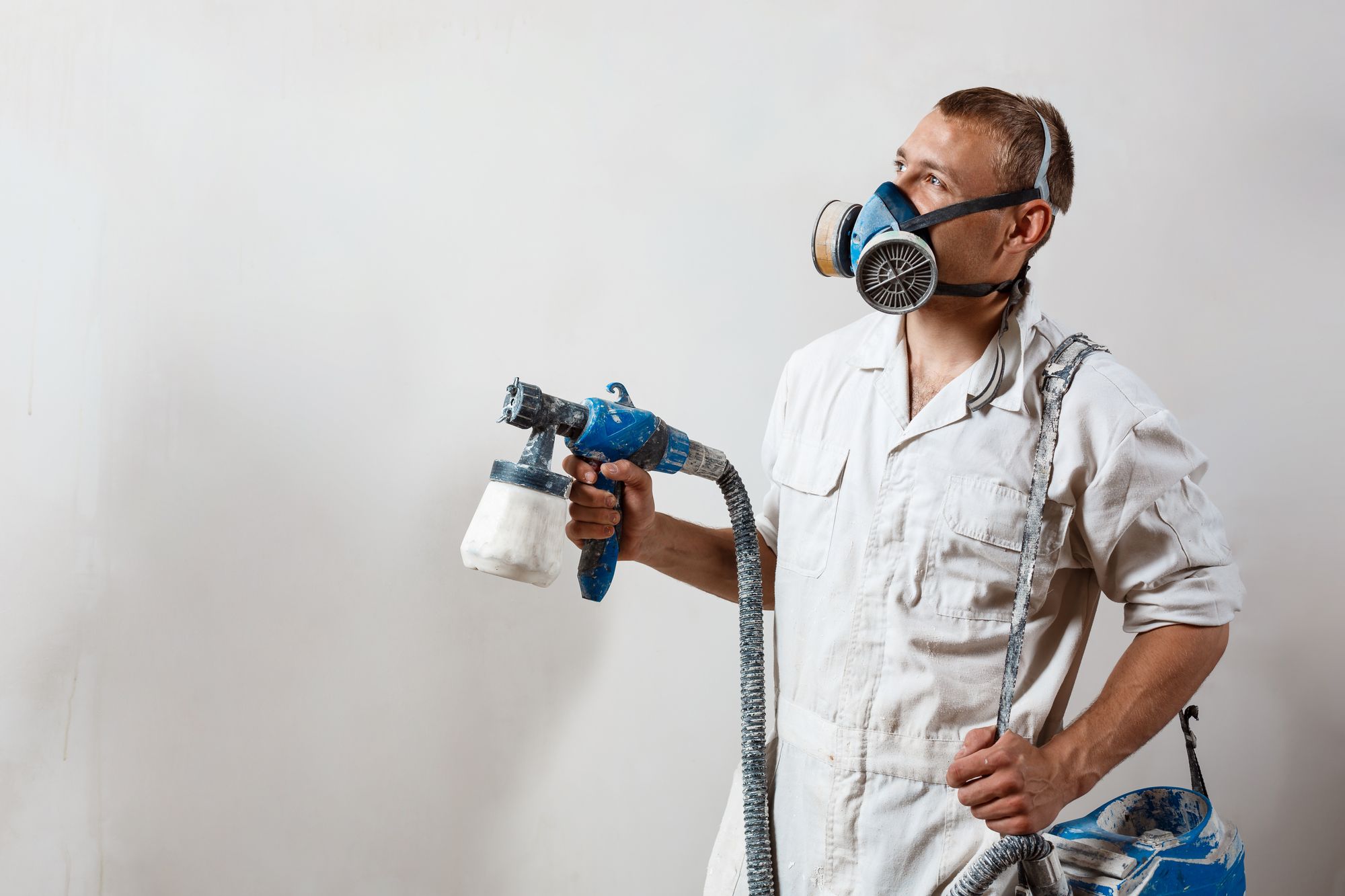
Technology Integration: Enhancing Painting and Decorating with Modern Tools
In today’s digital age, technology plays a pivotal role in transforming traditional painting and decorating projects. From color-matching apps to augmented reality (AR) tools, technological advancements provide homeowners and professionals with innovative ways to envision and execute their design ideas more effectively and efficiently. Here’s how these technologies are making a significant impact:
- Color-Matching Apps
Color-matching apps have revolutionized the way we select paint colors. These apps allow users to capture colors from any source — whether a fabric swatch, an artwork, or even a favorite flower — using their smartphone camera. The app then identifies the closest paint match available from popular brands. This technology eliminates guesswork and helps ensure that you achieve precisely the color you desire. Examples of popular color-matching apps include Sherwin-Williams’ ColorSnap®, Benjamin Moore’s Color Capture®, and Behr’s ColorSmart®.
- Augmented Reality for Visualization
Augmented reality (AR) apps take the guesswork out of imagining how a space will look post-renovation. By using the camera on a smartphone or tablet, these apps overlay digital images of selected paint colors and decorating finishes onto live views of your room. This means you can see what your walls would look like in a particular shade of paint or how a new piece of furniture might fit into your existing layout without physically making any changes. Apps like IKEA Place and Houzz’s View in My Room 3D offer robust AR features tailored for home decorating.
- Virtual Reality Design Suites
Virtual reality (VR) takes AR a step further by immersing the user in a fully digital environment. VR design suites allow you to navigate through a virtual model of your room or building, experimenting with different design elements. This can be particularly useful for larger renovation projects, as it provides a holistic view of the end result, enabling better decision-making about materials, colors, and space distribution. Tools like SketchUp and Autodesk’s Revit offer capabilities that are increasingly accessible to both professionals and DIY enthusiasts.
- Online Project Management Tools
Modern project management tools are crucial for keeping large-scale decorating projects on track. Platforms like Trello, Asana, and Monday.com allow you to plan, track, and manage all aspects of your project from timeline scheduling to budget oversight. These tools can be invaluable for coordinating with contractors, designers, and suppliers, ensuring that everyone is aligned and that the project progresses smoothly.
- Digital Swatches and Boards
Creating digital swatches and mood boards can help in visualizing the overall aesthetic of a project. Websites like Pinterest or apps like Morpholio Board enable users to compile and share ideas and inspirations, as well as to create comprehensive visual plans that can be easily communicated to others involved in the project.
The Benefits of Integrating Technology
Integrating these technological tools into your painting and decorating projects can offer several benefits:
- Increased Accuracy: Tools like color-matching apps reduce the risk of color discrepancies between your vision and the actual result.
- Enhanced Visualization: AR and VR allow you to see potential changes before they are made, which can help in making more informed decisions.
- Efficiency and Convenience: Digital tools streamline the planning and execution process, saving time and potentially reducing costs.
- Collaboration: Online platforms facilitate better communication and collaboration among all parties involved in a decorating project.
By leveraging these technologies, you can enhance the creativity and efficiency of your painting and decorating projects, leading to better outcomes and more satisfied clients or personal satisfaction with your home’s new look.
Enhancing Your Home's Look: Creative Decorating Ideas
Decorating is an exciting way to infuse personality into your rooms and make them truly yours. Here are some creative decorating ideas that can transform any space into a stunning showcase:
- Go Bold with Wall Art: Artwork can dramatically change the ambiance of a room. For instance, a large, vibrant painting can serve as a focal point in a minimalist living room, while a collection of black and white photographs can add a sophisticated touch to your bedroom.
- Play with Mirrors: Mirrors are not just practical; they can also enhance your home's aesthetic appeal. A beautifully framed mirror can make a small room appear larger, and it can brighten up a dark space by reflecting light.
- Experiment with Textures: Textures can add depth and interest to your rooms. You can incorporate different textures through furniture, accessories, or even walls. For example, a velvet sofa, a sisal rug, and a brick accent wall can create a fascinating mixture of smooth, rough, and rustic textures.
- Embrace Greenery: Plants can bring a breath of fresh air to your interiors. A tall fiddle-leaf fig can add height to your living room, while a cluster of succulents can add a touch of nature to your home office.
- Mix and Match: Don't be afraid to mix styles, colors, and patterns. A modern table can look stunning next to a vintage chair, and a striped rug can beautifully complement a floral sofa.
Remember, the goal of decorating is to create a space that reflects your taste and lifestyle. So, feel free to bend the rules and create a home that makes you happy and comfortable.
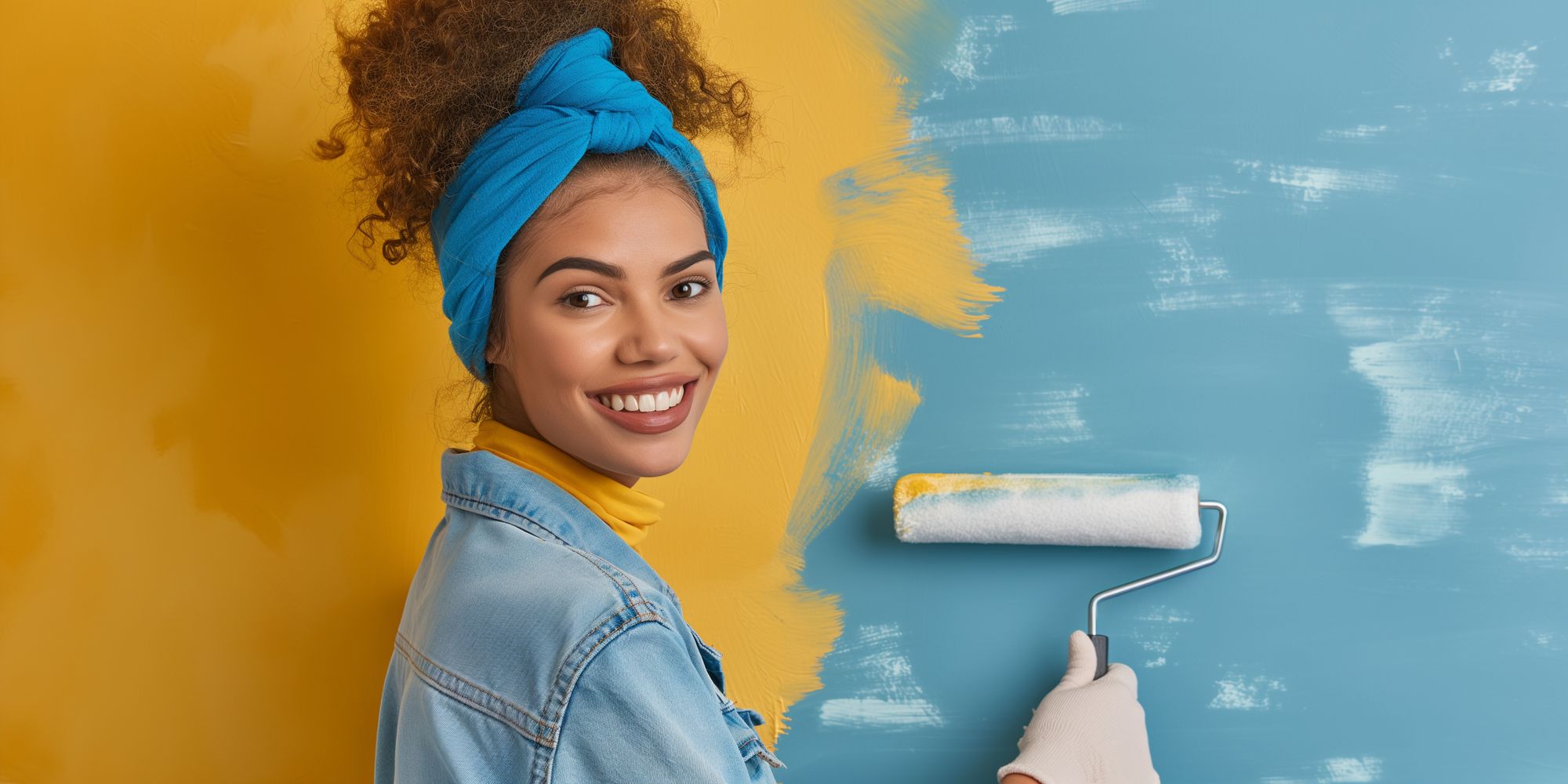
Transforming Your Space with Color and Style
Color and style are powerful tools in interior design. They have the ability to completely transform a room, creating any mood from serene and peaceful to vibrant and energetic. Here's how you can use them to change the feel of your space:
- Color: Color influences our emotions and behaviors. Light colors such as white, beige, and pastels can make a room feel larger, brighter, and more inviting. On the other hand, dark colors like deep blue, emerald green, or charcoal create a cozy, intimate ambiance. For instance, painting your living room in a soft sky blue can instill a sense of calm and tranquility, while a bold, red dining room can stimulate conversation and appetite.
- Style: The style of a room is defined by its furniture, decor, and layout. A minimalist style, with its clean lines and neutral color palette, can create a feeling of simplicity and serenity. On the contrary, a bohemian style, with its rich colors and eclectic mix of patterns and textures, can create a vibrant, creative vibe. For example, transforming your bedroom into a minimalist haven with a monochrome palette and sleek furniture can promote relaxation and improved sleep.
- Combining Color and Style: Merging color and style can create a cohesive, well-designed space. A mid-century modern living room in warm earth tones can feel both stylish and inviting, while a coastal-themed bedroom in cool blues and whites can transport you to the seaside.
The power of color and style is immense. By carefully selecting and combining these elements, you can create a space that not only looks great, but also feels perfectly attuned to your needs and personality.
Adding Value to Your Home Through Painting and Decorating
Aesthetic appeal plays a crucial role in determining a property's value. Smart painting and decorating choices can significantly increase your home's worth, offering a substantial return on investment. Here's how you can add value through strategic home improvements:
- Exterior Painting: A fresh coat of paint on the exterior can boost curb appeal and increase your home's value by up to 5%. It's the first impression potential buyers get, and a well-maintained, attractive exterior can add thousands to your home's selling price.
- Interior Painting: Neutral colors tend to appeal to the majority of buyers. According to HomeGain's 2012 survey, a $700 investment in interior painting can yield a $2,000 increase in the sale price, a near 200% return on investment.
- Kitchen & Bathroom Updates: These two rooms significantly impact a home's value. A minor kitchen remodel, including a fresh coat of paint and updated hardware, can recoup about 80% of its cost at resale. Similarly, a well-decorated, modern bathroom can offer a return on investment of up to 70%.
- General Decorating: Staging a home with tasteful, stylish décor can increase its value by up to 10%. This includes simple updates like new light fixtures, modern window treatments, and stylish furniture.
- Landscaping: While not directly related to painting and decorating, enhancing your outdoor space can add significant value. A well-maintained, colorful garden can add up to 20% to your property's value.
Remember, the key is to appeal to a broad range of potential buyers. Stick with timeless, classic styles and neutral colors for the best return on your painting and decorating investment.
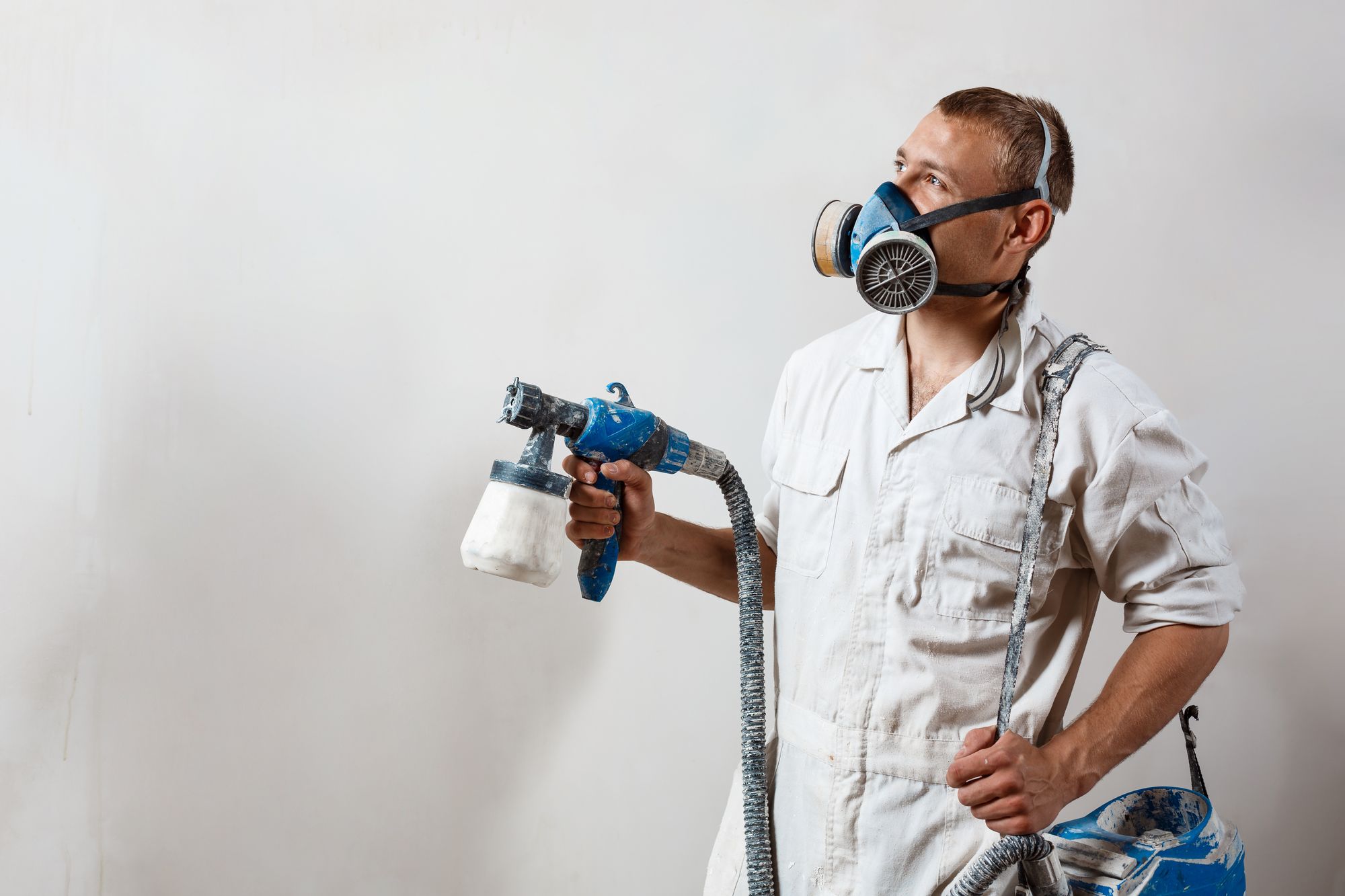
Expert Tips for a Professional Finish
Achieving a professional finish in home projects requires careful planning, the right tools, and attention to detail. Here are some expert tips to help you get that flawless finish:
- Preparation is Key: Start by preparing the surface. This might involve cleaning, sanding, or priming. Skipping this step can result in an uneven finish or paint that peels over time.
- Invest in Quality Tools: Good quality brushes, rollers, and paint sprayers can make a significant difference in the final look. A high-quality brush will not leave bristle marks, while a premium roller can provide a smoother finish. A paint sprayer, though more expensive, can offer a streak-free finish on larger surfaces.
- Choose the Right Paint: Higher quality paints often have better pigments and binders, which result in a more durable, smoother finish. They may be more expensive initially, but can save costs in the long run by reducing the need for multiple coats or frequent touch-ups.
- Use Proper Technique: When painting, use long, smooth strokes to avoid visible brush marks. If using a roller, roll in a 'W' pattern for an even distribution of paint. With a sprayer, hold it a consistent distance from the surface and overlap your spray patterns.
- Finish with Finishing Coat: After the paint has dried, consider a finishing coat for added durability and shine. This could be a varnish for woodwork or a protective coat for walls.
- Clean Up: Cleaning your tools after each use will ensure they are in top condition for the next project. This can extend the life of your tools and maintain the quality of their performance.
By following these tips and investing in the right tools and materials, you'll be well on your way to achieving a professional finish on your home projects.
Common Painting and Decorating Mistakes to Avoid
- Rushing the Prep Work: Many amateur decorators rush or entirely skip the crucial step of preparing surfaces. This can lead to peeling or unevenly absorbed paint. Always clean, sand, and prime your surfaces as necessary before painting.
- Ignoring the Primer: Primer ensures proper paint adhesion and can help bring out the paint's true color. Using a primer is especially important when painting over darker colors or new drywall.
- Choosing the Wrong Paint Sheen: Different sheens serve different purposes. For instance, high-gloss is durable and easy to clean, making it suitable for high-traffic areas or children's rooms. On the other hand, matte or flat paint provides a rich, sophisticated finish but isn't as easy to clean.
- Overcrowding the Room: When decorating, less is often more. Too many pieces of furniture or decor can make a room feel small and cluttered. Ensure you have enough space to move comfortably and that each piece has room to shine.
- Ignoring Lighting: Lighting significantly impacts how colors look. Always consider room lighting when choosing paint colors and try to view color samples under different light conditions.
Avoiding these common mistakes can help ensure a successful painting and decorating project. Always take the time to plan and prepare before diving in, and don't be afraid to seek professional advice if needed.
DIY vs. Hiring a Professional: What's the Best Choice?
When it comes to painting and decorating, deciding between a do-it-yourself (DIY) approach and hiring a professional can be challenging. Here's a look at the pros and cons of each:
DIY
Pros: DIY projects can be cost-effective as you save on labor costs. They also provide a sense of accomplishment and allow for complete creative control.
Cons: DIY projects can be time-consuming and can result in less-than-professional results if you lack experience.
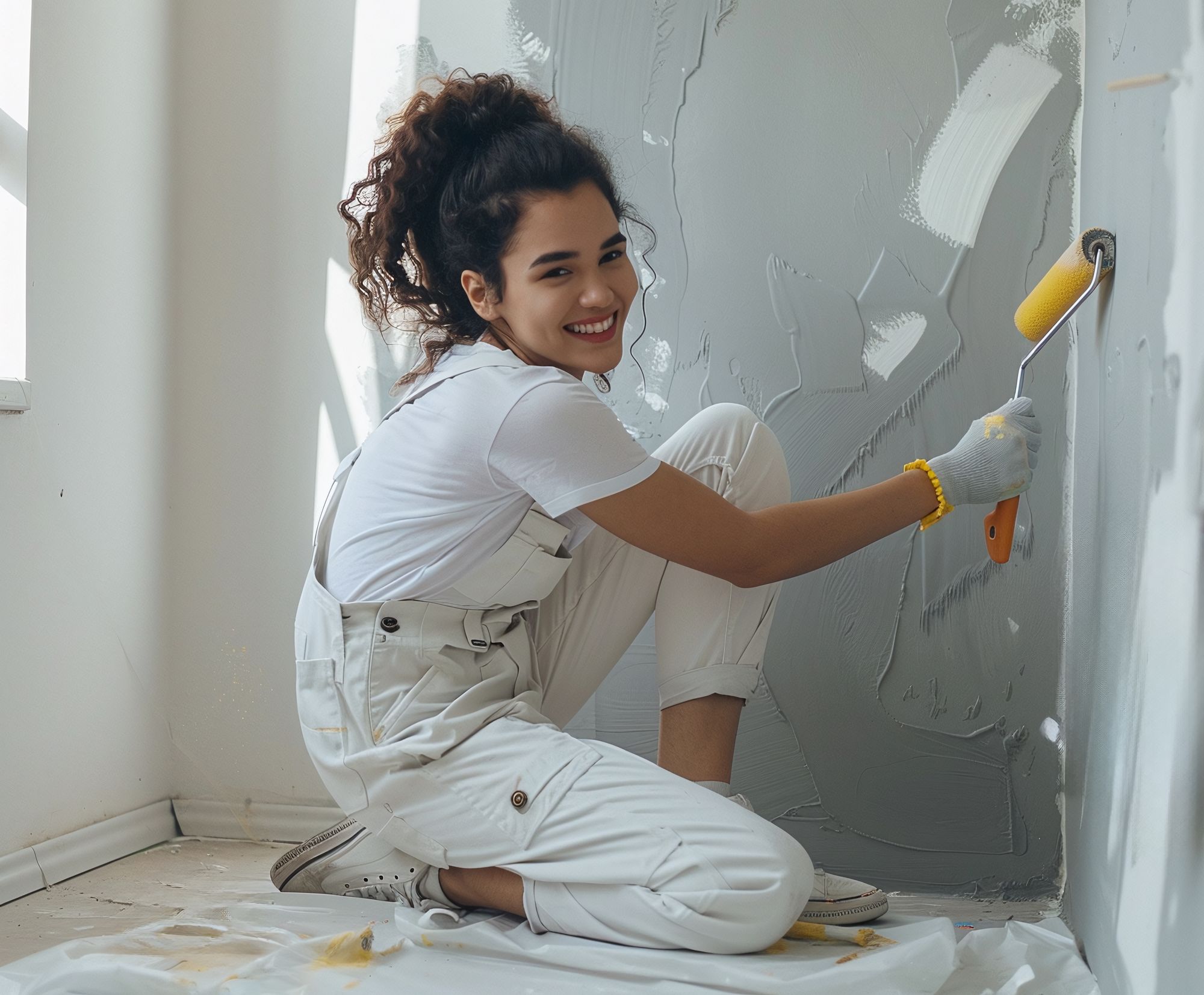
Hiring a Professional
Pros: Professionals bring expertise and efficiency to the project. They're likely to do the job quicker and with a higher quality finish. They're also equipped to handle unexpected issues that may arise during the project.
Cons: Hiring a professional can be considerably more expensive than doing it yourself. Additionally, you'll need to ensure you're hiring a reputable professional to avoid subpar work.
In conclusion, if you have the time, skill, and desire to DIY, it can be a rewarding and cost-effective option. However, for larger projects or if you want a guaranteed professional finish, hiring a professional could be the best choice.
Maintaining Your Paint Job: Tips and Tricks
A fresh paint job can transform a space, but maintaining that pristine look requires some effort. Here are some tips and tricks to keep your paint job looking new:
- Clean Regularly: Dust and dirt can dull your paint's color and finish. Regular light cleaning, using a soft cloth or sponge with mild soapy water, can keep your walls looking fresh.
- Tackle Stains Immediately: If you notice a stain, address it as soon as possible. Blot the stain, don't scrub, to avoid damaging the paint.
- Avoid Sunlight Damage: Direct sunlight can cause paint to fade over time. Use window coverings like curtains or blinds to protect your walls during peak sunlight hours.
- Touch Up As Needed: Keep some leftover paint for minor touch-ups. Remember to feather the paint out at the edges to blend the new paint with the old.
- Refresh Every Few Years: Even with good maintenance, paint can lose its luster over time. Consider refreshing your paint job every five to seven years, or whenever you notice significant wear.
With these tips, you can ensure that your paint job remains vibrant and fresh for years to come.
Safety Considerations: Ensuring a Secure Environment in Painting and Decorating
Safety should be a top priority in any home improvement project, especially during painting and decorating. Whether you’re undertaking a DIY project or overseeing professional work, understanding and implementing safety measures can prevent accidents and ensure a healthy working environment. Here are essential safety practices to consider:
Personal Protective Equipment (PPE)
- Respiratory Protection: When sanding surfaces or applying paint, especially in poorly ventilated areas, wear appropriate masks or respirators to avoid inhaling dust, mold spores, or chemical fumes. For most painting projects, a simple N95 mask will suffice to filter out particulate matter. For more intense exposure to fumes, such as when using oil-based paints or strippers, a more robust respirator might be necessary.
- Eye Protection: Safety goggles should be worn to protect your eyes from splashes, sprays, and drips, particularly when painting ceilings or working with solvents.
- Skin Protection: Wear gloves and long sleeves to protect your skin from chemicals in paints and solvents. Some components in paints can cause skin irritation or allergic reactions.
Ventilation
- Ensure Adequate Airflow: Proper ventilation is crucial when painting indoors. Open windows and doors, and use fans to circulate air and disperse fumes. This not only protects your respiratory health but also helps paint to dry more evenly and quickly.
- Use Paints with Lower VOCs: Opt for paints with low volatile organic compounds (VOCs) to minimize toxic emissions. These are healthier for both the environment and indoor air quality.
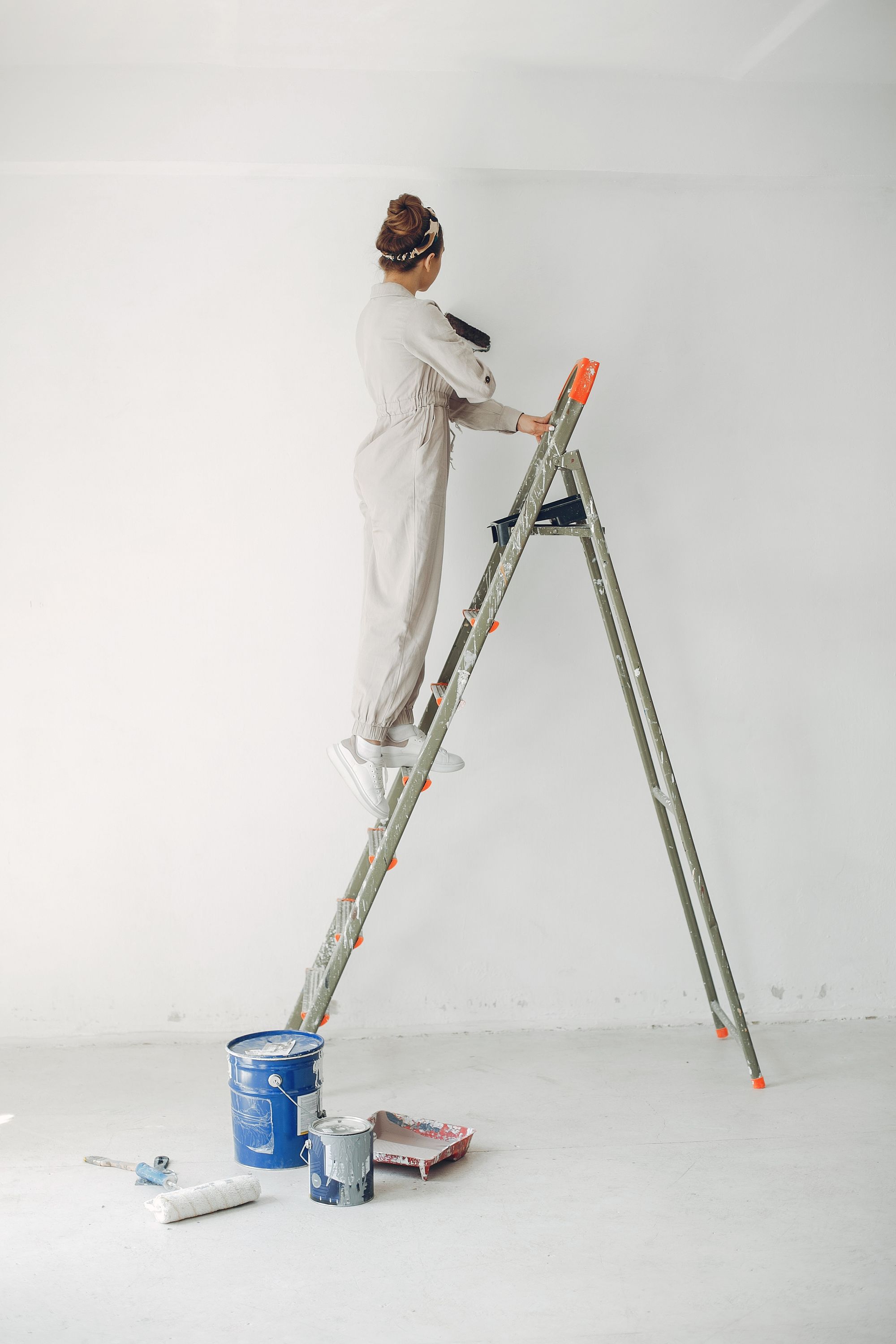
Ladder Safety
- Stable Placement: Always ensure that ladders are placed on a stable, level surface and never stand on the top rung of a ladder.
- Correct Usage: Use ladders that are of appropriate height for the task to avoid overreaching, which can lead to falls. Follow the 4-to-1 rule for ladder placement: for every four feet of ladder height, the base should be one foot away from the wall.
- Regular Checks: Regularly inspect ladders for loose screws, hinges, or rungs, and never use a damaged ladder.
Electrical Safety
- Avoid Water Contact: When painting around electrical outlets, switch off the power to avoid electrical shocks. Cover outlets with painter’s tape as a precaution.
- Use Proper Lighting: Ensure adequate lighting when painting, especially in areas like basements or interiors with limited natural light. Use safe, properly insulated extension cords and lights.
Safe Disposal of Materials
- Proper Paint Disposal: Never pour leftover paint down drains or into the environment. Many areas have designated paint recycling or disposal facilities. If in doubt, contact your local waste management authorities for guidance.
- Recycle or Donate: If you have usable amounts of leftover paint, consider donating to local theaters, schools, or community centers.
- Clean-Up: Use appropriate solvents for cleaning brushes and rollers, and dispose of any rags soaked in flammable substances in metal containers with lids to prevent fires.
Fire Safety
- Storage of Flammable Materials: Store all flammable materials, like turpentine and paint thinner, in proper, labeled, non-glass containers away from heat sources.
- No Smoking: Enforce a strict no-smoking policy in areas where painting is being done to prevent fire hazards.
Awareness of Hazardous Materials
- Lead-Based Paint: If your home was built before 1978, there might be existing layers of lead-based paint. In such cases, it’s crucial to not sand or scrape off the paint without professional guidance, as lead dust can be extremely hazardous.
Implementing these safety practices will help ensure that your painting and decorating projects are not only successful but also safe for everyone involved. It’s always better to err on the side of caution and invest in the right safety measures from the start.
Eco-Friendly Painting and Decorating
Making environmentally conscious choices is increasingly important in all aspects of life, including painting and decorating. Here are some ways to make your next project more eco-friendly:
- Choose Low-VOC or No-Voc Paints: Traditional paints often contain Volatile Organic Compounds (VOCs), which can harm the environment and your health. Low or no-VOC paints are a more eco-friendly choice.
- Use Eco-Friendly Brushes and Rollers: Many brushes and rollers are made with synthetic materials that aren't biodegradable. Opt for tools made with natural materials and consider those with bamboo or wooden handles.
- Recycle and Reuse: Rather than buying new decor pieces, consider repurposing or upcycling items you already have. This not only helps the environment but also adds a unique touch to your space.
- Choose Sustainable Materials: If you're redecorating, consider furniture and decor made from sustainable materials. Look for items made of recycled materials, sustainably sourced wood, or organic fabrics.
- Dispose of Paint Properly: Never pour leftover paint down the drain. Many communities have paint recycling programs, or you can donate leftovers to organizations that can use them.
Community and Social Impact: Responsible Choices in Painting and Decorating
The decisions we make in our painting and decorating projects have broader implications beyond the immediate aesthetic or functional outcomes. These choices can significantly impact our communities and the environment. By opting for sustainable practices and supporting local businesses, we can contribute positively to our surroundings. Here are some key areas where your choices can make a difference:
Choosing Eco-Friendly Products
- Low-VOC and No-VOC Paints: Volatile Organic Compounds (VOCs) are chemicals found in many traditional paints and varnishes that can cause air pollution and potential health issues. Opting for low-VOC or no-VOC paints improves indoor air quality and reduces environmental pollution.
- Sustainable Materials: Choose paints, finishes, and decorating materials that are produced sustainably. Look for products made from renewable resources, such as bamboo, cork, and recycled materials. Also, consider the lifecycle of the products you choose, preferring those that are biodegradable or recyclable.
- Natural and Organic Fabrics: When selecting curtains, upholstery, or other fabric-based decorations, consider organic cotton, linen, or wool, which are less harmful to the environment and reduce exposure to pesticides and synthetic chemicals.
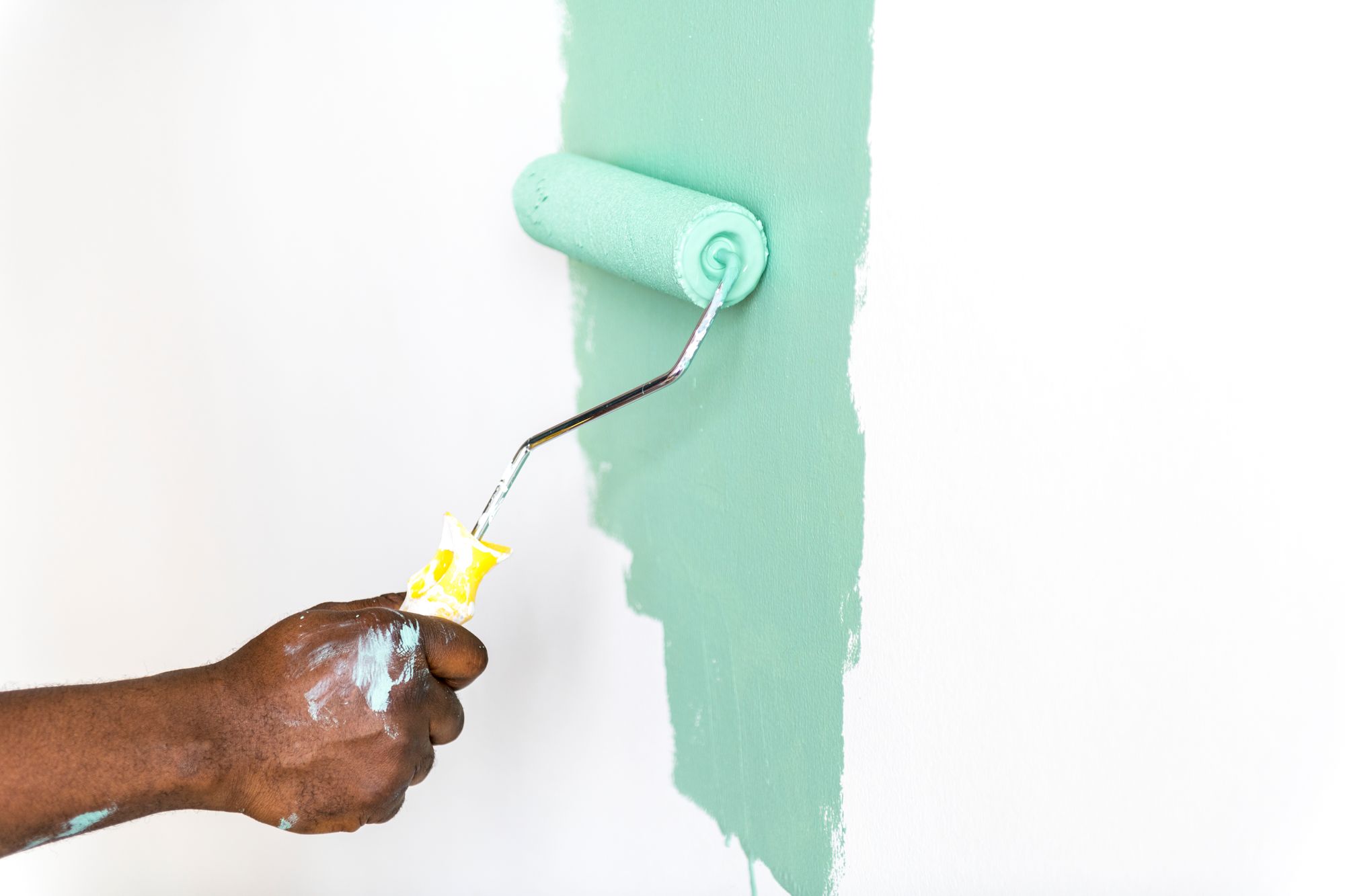
Supporting Local Businesses
- Local Artisans and Craftsmen: Employing local artisans for custom work not only supports the local economy but also reduces the carbon footprint associated with transporting goods. Additionally, local craftsmen can offer unique, handcrafted items that add a personal touch to your space.
- Local Suppliers: Purchasing supplies from local paint shops and hardware stores helps to keep money within the community, supporting job creation and economic stability.
- Community Involvement: Engage with community-based projects or initiatives that promote beautification or renovation. This can include volunteering for local paint drives, helping to refurbish community centers, or participating in neighborhood clean-up days.
Promoting Health and Safety
- Healthy Choices: By choosing products that are safer for the environment, you are also choosing healthier options for your home and community. This reduces health risks associated with toxins and pollutants, contributing to the overall well-being of your family and neighbors.
- Educational Outreach: Share your knowledge about eco-friendly and health-conscious choices with friends, family, and community members. Education is a powerful tool for fostering a community that values sustainability and health.
Preserving Cultural Heritage
- Cultural Colors and Patterns: Incorporate local cultural elements into your designs to preserve and promote heritage. This can be particularly impactful in communities with rich traditions and histories, helping to keep these alive for future generations.
- Restoration and Preservation: If you’re working on a historic home or building, consider techniques and materials that are true to the original era, while still incorporating modern sustainability practices. This respects and preserves cultural heritage while ensuring environmental responsibility.
Advocating for Regulations and Policies
- Active Advocacy: Advocate for local and national policies that promote sustainable practices in building and decorating. This could include supporting initiatives for recycling building materials or requiring eco-friendly standards for new developments.
By making thoughtful choices in your painting and decorating projects, you not only enhance your own living space but also contribute positively to the community and the environment. These decisions help promote a healthier, more sustainable world for current and future generations.
Legal and Compliance Issues: Navigating Regulations in Painting and Decorating
When planning any painting and decorating project, particularly those involving significant renovations or exterior alterations, it’s crucial to be aware of and comply with local regulations. These laws and guidelines are designed to ensure safety, preserve community aesthetics, and protect the environment. Here’s what you need to know to keep your project within legal bounds:
- Understanding Building Codes
Building codes are regulations that specify standards for construction and renovations. These codes can affect how structural changes must be done, the types of materials used, and even the colors or exterior finishes in some neighborhoods. Before beginning any significant alterations, consult your local building code enforcement agency to get a clear understanding of the applicable codes. This is particularly important for projects that alter the structure or exterior facade of a building.
- Zoning Laws
Zoning laws dictate how properties in specific areas can be used. These laws can influence the type of renovations allowed. For example, certain zones may have restrictions on the height of structures or the percentage of land that must remain unconstructed. Local zoning ordinances may also control the changes you can make to the exterior of your home or business, especially if your project could impact the character of the neighborhood.
- Historic Preservation Rules
If your property is located in a historic district or is a designated historic landmark, there may be stringent guidelines governing any modifications, including painting and decorating. These rules are often in place to preserve the historical aspects of a building. Compliance might include restrictions on paint colors, types of materials allowed, or the requirement to maintain original design elements. Check with your local historic preservation society or governing body for specific regulations.
- Environmental Regulations
Environmental regulations may come into play, especially if your project involves significant construction or disposal of materials. For instance, the use of certain types of paints that contain volatile organic compounds (VOCs) may be restricted to protect air quality. Furthermore, proper disposal of paint and construction debris is crucial to avoid environmental contamination. Your local environmental protection agency can provide guidelines on eco-friendly practices and disposal requirements.
- Permit Requirements
Most local governments require permits for construction and major renovations, which might include extensive painting projects, especially when they affect the exterior of the building. Permitting processes are in place to ensure that all modifications meet safety and zoning requirements. Failing to obtain necessary permits can result in fines, forced reversal of your project, or difficulties in selling the property later.
- Neighbor Notifications
In many areas, especially in dense urban environments, you may be required to notify neighbors of construction or major renovation projects. This is generally seen as a courtesy to prepare others for potential noise and disruptions but can sometimes be a legal requirement.
Tips for Compliance
- Consult Professionals: Engage with architects, contractors, or legal experts who are familiar with local laws to help navigate the complexities of your project.
- Research Thoroughly: Visit your local government’s website or offices to obtain up-to-date information on all compliance requirements.
- Keep Documentation: Maintain all records of compliance, including permits, professional consultations, and communications with regulatory bodies.
- Follow Up: After completing your project, ensure all inspections are carried out as required to formalize the legality of the work.
By understanding and adhering to these legal and compliance issues, you can ensure that your painting and decorating project progresses smoothly without legal interruptions and contributes positively to your community’s safety and aesthetics.

Painting and Decorating for Business Spaces
Painting and decorating in a business setting can significantly impact the overall ambiance and productivity. Here are some considerations:
- Color Psychology: Colors can influence mood and behavior. For instance, blue can induce calmness and increase productivity, while green can reduce eye strain.
- Brand Consistency: The color scheme should align with the company's brand to present a cohesive image. This can include logos, company colors, or themes.
- Consider Functionality: Different areas might need different decoration strategies. A brainstorming room might benefit from vibrant colors to stimulate creativity, while a meeting room might need a more neutral palette for a formal atmosphere.
- Durability: Businesses often see higher foot traffic than homes, so consider using high-quality, durable paint and materials that can withstand regular use.
- Maintenance: Choose materials that are easy to clean and maintain to keep the space looking fresh and professional.
- Eco-Friendly Choices: Businesses today are expected to be environmentally conscious. Using low-VOC or VOC-free paints and sustainable materials can demonstrate a commitment to eco-friendly practices.
Remember, a well-painted and decorated business space can enhance the work environment and leave a positive impression on clients and employees.
Making the Most Out of Small Spaces
Small spaces can be transformed into inviting, functional areas with the right painting and decorating techniques. Here are some tips:
- Light Colors: Lighter hues reflect more light, making the room feel open and airy. White, cream, or pastel tones are excellent choices.
- Mirrors: Mirrors can create the illusion of a larger space by reflecting light and adding depth. Place them on walls or use mirrored furniture pieces.
- Multifunctional Furniture: Choose furniture that serves multiple purposes, like a bed with built-in storage or a fold-down desk, to save space.
- Vertical Space: Utilize vertical space with tall shelves or wall-mounted storage. This draws the eye upward, giving the illusion of a larger room.
- Stripes: Painting stripes on your walls can elongate or widen a room. Vertical stripes make a room seem taller, while horizontal stripes make it appear wider.
- Declutter: Keep your space tidy and organized. Too many items can make a small space feel cramped.
By utilizing these tips, you can make your small space feel more spacious and inviting.
Painting and Decorating Trends to Watch
Staying updated with the latest trends in painting and decorating can help keep your space fresh and modern. Here are some trends to watch:
- Natural Tones: Earthy tones, like various shades of brown, green, and blue, are making a comeback. They bring a sense of tranquility and connection with nature.
- Bold Monochromatic Schemes: Bold, single-color schemes are a growing trend. They create a dramatic, cohesive look that can make a strong statement.
- Textured Walls: Textured walls, whether through paint techniques or wall coverings, are gaining popularity. They add depth and interest to a room.
- Sustainable Materials: The focus on sustainability continues to grow. Expect to see more furniture and decor made from recycled or sustainable materials.
- Maximalism: Contrary to minimalism, maximalism celebrates abundance and extravagance. Think bold color schemes, eclectic furniture, and layered patterns.
- Biophilic Design: This design trend involves integrating elements of nature into the home to promote well-being. This can include indoor plants, natural light, or nature-inspired patterns.
Remember, trends come and go. Choose what resonates with your personal style and what makes your space feel like home.
Conclusion
In conclusion, painting and decorating are integral parts of creating a pleasant and productive business environment. Understanding color psychology can lead to more productive spaces, and maintaining brand consistency throughout the office can strengthen a company's identity. In small spaces, light colors and strategic use of mirrors can make these places appear larger and more welcoming.
Similarly, staying abreast of the latest trends is crucial. 2022 promises fresh ideas, from biophilic design to bold color palettes, that can revitalize your spaces. However, it's essential to choose trends that resonate with your brand and space.
Whether you're a business owner seeking to refurbish your office or a homeowner looking to maximize a small space, thoughtful painting and decorating can significantly enhance your environment. Don't be afraid to experiment with different styles and trends, but always keep in mind the space's functionality and the inhabitants' comfort.
Now, it's over to you. Start planning your new design and see how a fresh coat of paint or a trending decorative piece can breathe new life into your spaces. Take these thoughts into consideration, and make your space a place where creativity, productivity, and comfort align.






